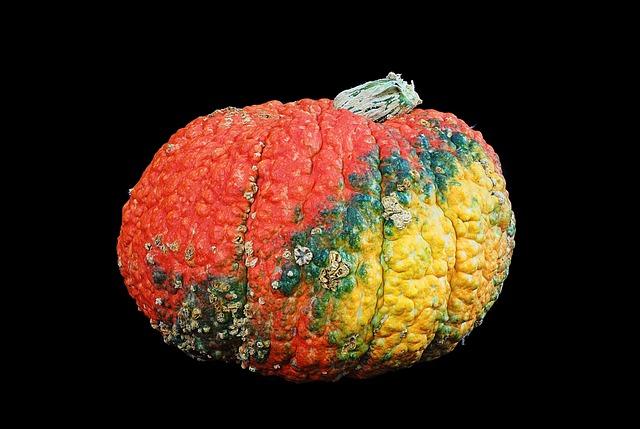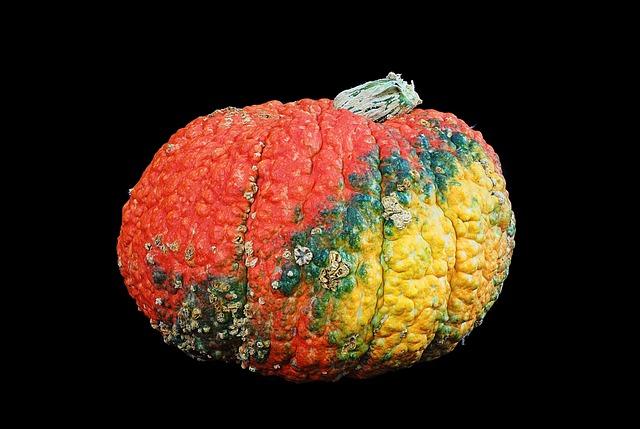Do Genital Warts Occur on Thighs? Community Insights

Welcome to our informative article on the intriguing topic of genital warts and their potential occurrence on the thighs. Curiosity and concern often arise when discussing the location of these pesky growths, and our aim today is to shed light on this matter with community insights. With a tone that is natural, confident, knowledgeable, neutral, and clear, we will delve into the world of genital warts, unraveling the truth behind their presence on the thighs. So sit back, relax, and allow us to provide you with the answers you seek.
Contents
- 1. Understanding the Relationship Between Genital Warts and Thighs
- 2. Recognizing the Symptoms: How Genital Warts May Manifest on the Thighs
- 3. Why Genital Warts Can Occur on the Thighs: Contributing Factors Explored
- 4. Differentiating Genital Warts from Other Skin Conditions Found on the Thighs
- 5. The Importance of Timely Diagnosis and Treatment for Genital Warts on the Thighs
- 6. Navigating Treatment Options: Effective Solutions for Genital Warts on Thighs
- 7. Preventive Measures: Minimizing the Risk of Genital Warts Spreading to the Thighs
- 8. Seeking Support: The Role of Community Resources in Dealing with Genital Warts on the Thighs
- Understanding Genital Warts on the Thighs
- Community Insights and Support
- 9. Empowering Conversations: Breaking the Stigma Surrounding Genital Warts on the Thighs
- 10. A Comprehensive Approach: Holistic Strategies for Managing Genital Warts and Promoting Overall Well-being
1. Understanding the Relationship Between Genital Warts and Thighs
Genital warts are a common sexually transmitted infection caused by certain types of human papillomavirus (HPV). While genital warts primarily appear on the genital area and anus, they can occasionally manifest on other parts of the body, including the thighs. It is important to understand the relationship between genital warts and thighs to better identify and manage this condition.
When genital warts spread to the thighs, it typically occurs through skin-to-skin contact. This can happen during sexual activity or through touching infected genital warts and subsequently touching the thighs. The transmission of genital warts to the thighs can especially occur if there are existing cuts, abrasions, or even microtears on the skin, creating a pathway for the virus to enter.
If you suspect that you have genital warts on your thighs, it is crucial to seek medical advice for diagnosis and treatment. Your healthcare provider may examine the affected area, and if necessary, perform tests to confirm the presence of HPV. Treatment options for genital warts on the thighs may include topical medications, cryotherapy, or laser treatment, depending on the severity and extent of the infection.
2. Recognizing the Symptoms: How Genital Warts May Manifest on the Thighs
Genital warts are an extremely common sexually transmitted infection caused by certain strains of the human papillomavirus (HPV). While these warts typically appear in the genital area, it is possible for them to manifest on the thighs as well. Although less common, this occurrence can still cause confusion and concern for those affected. In this post, we’ll explore how genital warts may present themselves on the thighs, providing valuable insights from the community.
Symptoms of genital warts on the thighs can vary in appearance and severity. Patients have reported noticing small, raised bumps or clusters that may resemble cauliflower. These warts can be flesh-colored, pink, or even grayish in tone. It’s vital to remember that genital warts on the thighs may not be identical to those found in the genital area, but they are still caused by the same HPV strains.
If you suspect that you have genital warts on your thighs, it is crucial to consult a healthcare professional for a proper diagnosis and treatment. Remember, self-diagnosis without medical expertise can be misleading. Developing a comprehensive understanding of this topic is essential, as it helps us support and provide valuable information to those who may be experiencing or seeking knowledge about genital warts on the thighs.
3. Why Genital Warts Can Occur on the Thighs: Contributing Factors Explored
Genital warts are commonly associated with the genital and anal areas, but surprisingly, they can also occur on the thighs. While this may come as a surprise to many, understanding the contributing factors behind this occurrence can help shed some light on why genital warts can manifest in unexpected places.
One of the main reasons why genital warts can appear on the thighs is through skin-to-skin contact. The human papillomavirus (HPV), which is responsible for causing genital warts, can easily spread from one area to another through contact with infected skin or mucous membranes. Therefore, if a person with genital warts on their genitals or anus has close contact with their thighs, the virus can potentially be transmitted to the thigh skin, leading to the appearance of warts in that area as well.
Another possible contributing factor is autoinoculation. This occurs when a person touches a genital wart and then touches another part of their body, such as their thighs. This can happen unknowingly, especially if the individual is not aware that they have genital warts. The virus can be easily transferred in this way, causing warts to develop on the thighs.
It’s important to note that the presence of genital warts on the thighs does not necessarily indicate a different strain of HPV. The strains responsible for genital warts are generally the same, regardless of where they appear on the body. However, consulting a healthcare professional is crucial for proper diagnosis and treatment options.
To minimize the risk of genital warts occurring on the thighs or other areas, practicing safe sex, including the use of condoms, can help significantly reduce the chances of HPV transmission. Regular check-ups with a healthcare provider and getting vaccinated against HPV can also provide added protection. Remember, early detection and treatment are key to managing genital warts effectively. Stay informed and take proactive measures to safeguard your health.
4. Differentiating Genital Warts from Other Skin Conditions Found on the Thighs
Genital warts, commonly caused by the human papillomavirus (HPV), are often mistaken for other skin conditions found on the thighs. However, it’s important to understand the distinguishing characteristics of genital warts to ensure an accurate diagnosis. While genital warts primarily appear on the genital area, they can occasionally spread to the thighs. Here are a few key points to consider when trying to differentiate genital warts from other skin conditions found on the thighs:
1. Location: Genital warts typically appear in the genital area, including the vulva, vagina, penis, scrotum, and anus. However, if the warts are left untreated or if transmission occurs through close contact, they can also be found on the inner thighs.
2. Appearance: Genital warts usually appear as small, flesh-colored or pinkish bumps with a rough texture. They can be either flat or raised, and may cluster together in a cauliflower-like shape. In contrast, other skin conditions found on the thighs, such as folliculitis or razor burn, often present as red, inflamed bumps without the characteristic texture of genital warts.
3. Texture: One way to differentiate genital warts from other skin conditions is to carefully examine the texture of the bumps. Genital warts typically have a rough, uneven surface, whereas other skin conditions found on the thighs tend to be smoother.
It is worth noting that self-diagnosis can be challenging, and it is always best to consult a healthcare professional for an accurate diagnosis and appropriate treatment. Remember, genital warts are highly contagious, so it’s vital to seek proper medical attention to prevent spreading the virus to others or other areas of your body. Stay informed, prioritize your sexual health, and don’t hesitate to seek expert advice.
5. The Importance of Timely Diagnosis and Treatment for Genital Warts on the Thighs
Genital warts are most commonly associated with the genital region, but they can also occur on the thighs. While this may come as a surprise to some individuals, it is important to recognize that the human papillomavirus (HPV) can infect any moist area of the skin. Therefore, if you notice any bumps or lesions on your thighs, especially if they resemble the typical appearance of genital warts, it is crucial to seek timely diagnosis and treatment.
There are several reasons why a prompt diagnosis and treatment for genital warts on the thighs is essential. Firstly, early detection allows for timely intervention and management of the condition, preventing the warts from spreading to other areas of the body or to other individuals through skin-to-skin contact. Secondly, treating genital warts on the thighs can potentially alleviate any discomfort or pain associated with the lesions. Lastly, addressing the issue promptly can help reduce the emotional distress that may result from living with visible warts, improving overall quality of life.
If you suspect that you may have genital warts on your thighs, it is strongly recommended to consult a healthcare professional. They can accurately diagnose the condition, provide appropriate treatment recommendations, and offer guidance on preventive measures. Remember, early intervention plays a crucial role in managing genital warts effectively.
Genital warts are typically associated with the genital and anal areas, but can they occur on the thighs? This has been a common question among individuals dealing with this sexually transmitted infection (STI). Through community insights and expert guidance, we aim to shed light on this topic and provide effective solutions for managing genital warts on the thighs.
Although less common, it is possible for genital warts to develop on the thighs in some cases. This can happen through direct skin-to-skin contact with someone who has the infection, or by spreading the virus from the genital area to the thighs during sexual activity. It’s important to note that genital warts on the thighs may appear slightly different from those on the genital or anal regions. They can be flat or raised, clustered together, or spread out in a wider area. It’s crucial to seek professional diagnosis and guidance if you suspect genital warts on your thighs or any other part of your body.
Fortunately, there are effective treatment options available for managing genital warts on thighs. These include:
1. Topical creams: Your healthcare provider may prescribe creams or ointments containing ingredients such as imiquimod or podophyllin. These can be applied directly to the affected area, helping to eliminate the warts.
2. Cryotherapy: This treatment involves freezing the genital warts with liquid nitrogen, causing them to fall off. It can be an effective option for larger or stubborn warts on the thighs.
3. Electrocautery or laser therapy: These procedures involve the use of an electric current or laser to destroy the warts. They can be effective for warts that are resistant to other treatments or are difficult to access on the thighs.
Remember, prevention is always better than treatment. Practicing safe sex and using barrier methods such as condoms can greatly reduce your risk of contracting or spreading genital warts. Regular check-ups and open communication with your healthcare provider are essential in managing and seeking appropriate treatment for genital warts, whether they occur on the thighs or any other part of your body.
In conclusion, while genital warts on the thighs may not be as common as in the genital or anal areas, they can occur. Seeking professional medical advice, engaging in safe sex practices, and exploring treatment options can help effectively manage and eliminate genital warts on the thighs. Remember, you are not alone in this journey, and there are resources and support available to help you navigate this aspect of your sexual health.
7. Preventive Measures: Minimizing the Risk of Genital Warts Spreading to the Thighs
Preventing the spread of genital warts to the thighs is a crucial concern for those affected by this sexually transmitted infection. While genital warts typically occur in the genital area, it is possible for them to spread to the thighs through contact or close proximity. To minimize this risk, it is essential to follow some preventive measures that can help protect yourself and others from transmitting the virus.
1. Practice safe sex: Always use barrier methods like condoms or dental dams during sexual activities to reduce the risk of spreading genital warts to the thighs or other areas.
2. Avoid direct skin-to-skin contact: Genital warts can easily spread from one person to another through direct skin-to-skin contact. Avoid intimate contact with someone who has visible genital warts, as this increases the chances of transmission.
3. Get vaccinated: The HPV vaccine can provide protection against certain strains of the human papillomavirus, which is the primary cause of genital warts. Talk to your healthcare provider about getting vaccinated, especially if you haven’t received it already.
4. Maintain good hygiene: Proper hygiene practices, such as daily washing and drying of the genital area, can help reduce the risk of spreading genital warts to the thighs or other body parts. Keep the area clean and dry to prevent moisture buildup, which can promote the growth of warts.
Remember, prevention is the key when it comes to genital warts. By following these preventive measures, you can play an active role in minimizing the risk of spreading the virus to your thighs or other parts of the body. If you suspect you have genital warts or if you have any concerns, it is essential to consult a healthcare professional for accurate diagnosis and appropriate treatment options. Stay informed, prioritize your sexual health, and take the necessary steps to protect yourself and your partners.
8. Seeking Support: The Role of Community Resources in Dealing with Genital Warts on the Thighs
Dealing with genital warts can be a distressing experience, and it’s essential to seek the right support and resources. While genital warts are commonly associated with the genital area, it may surprise some to learn that they can also occur on the thighs. In this post, we explore the occurrence of genital warts on the thighs and the role community resources can play in dealing with this specific condition.
Understanding Genital Warts on the Thighs
Genital warts are caused by the human papillomavirus (HPV), and they typically appear as small, flesh-colored bumps in the genital area. However, it’s important to note that HPV strains that cause genital warts can also affect other areas of the body, including the thighs. This occurrence on the thighs can lead to misconceptions or confusion among individuals who may wonder whether what they are experiencing is indeed genital warts or another condition.
Community Insights and Support
When facing genital warts on the thighs, turning to community resources can provide essential support and guidance. Online forums, support groups, and community organizations dedicated to sexual health can offer valuable insights and personal experiences from individuals who have dealt with similar situations. Sharing stories, discussing treatment options, and receiving emotional support can help those affected navigate their journey with genital warts on the thighs.
Treatment Options
While seeking professional medical advice is crucial when dealing with genital warts, treatments for the ones occurring on the thighs may differ from those for the genital area. Some common treatment options may include:
- Topical Creams: Prescription creams that can be applied directly to the affected area on the thighs.
- Cryotherapy: Freezing the warts with liquid nitrogen to destroy them.
- Electrocautery: Using an electric current to burn off the warts.
Working closely with healthcare professionals and sharing experiences and insights within the community can play a crucial role in finding the most effective treatment option tailored to genital warts on the thighs, helping individuals regain their confidence and peace of mind.

9. Empowering Conversations: Breaking the Stigma Surrounding Genital Warts on the Thighs
Genital warts on the thighs, although less commonly discussed, are a phenomenon that many individuals experience. This article aims to debunk the stigma surrounding this condition and provide insights from the community. Through open and empowering conversations, we can address the concerns and questions surrounding genital warts on the thighs, fostering a supportive and inclusive environment for those affected.
Here are some key insights from our community:
1. Location and appearance: Genital warts can appear on various parts of the body, including the thighs. They often manifest as small, flesh-colored bumps that may cluster together. It is important to note that these warts are caused by certain strains of the human papillomavirus (HPV).
2. Transmission: Genital warts on the thighs can be transmitted through skin-to-skin contact during sexual activities. However, they can also occur without any sexual contact, as HPV can be spread through other forms of close skin-to-skin contact.
3. Treatment options: It is crucial to consult a healthcare professional for an accurate diagnosis and appropriate treatment plan. Treatment options may include topical creams, cryotherapy (freezing), cauterization (burning), or surgical removal. Your healthcare provider can guide you to choose the best course of action depending on the severity of the warts and their impact on your daily life.
In conclusion, discussing and breaking the stigma surrounding genital warts on the thighs is essential for creating a supportive environment. Remember, seeking medical advice is crucial for accurate diagnosis and treatment options. Together, let’s empower one another by sharing knowledge and promoting understanding.
10. A Comprehensive Approach: Holistic Strategies for Managing Genital Warts and Promoting Overall Well-being
Genital warts can be an uncomfortable and embarrassing condition, and many people have questions about how they can manage this condition effectively. One common question that arises is whether genital warts can occur on the thighs.
While genital warts are typically found in the genital area, it is possible for them to spread to nearby areas such as the thighs. This can occur through skin-to-skin contact or if the warts are scratched or irritated, allowing the virus to spread. It’s important to note that not all bumps or lesions on the thighs are genital warts, so it’s crucial to consult with a healthcare professional for an accurate diagnosis.
Managing genital warts requires a comprehensive approach that not only focuses on treating the warts themselves but also promotes overall well-being. Here are some holistic strategies that can help in managing genital warts and maintaining overall health:
1. Consult a healthcare professional: If you suspect you have genital warts or notice any unusual bumps or lesions in the genital or thigh area, it’s essential to seek medical advice. A healthcare professional can properly diagnose the condition and recommend the most suitable treatment options.
2. Practice safe sex: Genital warts are highly contagious, so it’s crucial to use barrier methods such as condoms to reduce the risk of transmission. Additionally, limiting sexual partners and getting regular screenings can also help minimize the chances of contracting or spreading genital warts.
3. Boost your immune system: A strong immune system can help your body fight off the human papillomavirus (HPV) that causes genital warts. Focus on maintaining a healthy lifestyle by eating a balanced diet, getting regular exercise, managing stress, and getting enough sleep.
4. Treatments options: There are several treatment options available for managing genital warts, including topical creams, surgical removal, and cryotherapy. Discuss with your healthcare professional to determine the best approach based on the severity of the warts and your individual circumstances.
By taking a comprehensive and holistic approach, you can effectively manage genital warts and promote your overall well-being. Remember to consult with a healthcare professional for proper diagnosis and guidance on the most suitable treatment options. In conclusion, understanding the nature of genital warts and their characteristics is crucial for staying informed and knowledgeable about this common sexually transmitted infection. While genital warts primarily occur in the genital area, it is possible for them to appear on the thighs as well. This knowledge is essential in recognizing and treating the condition promptly, limiting its spread, and seeking appropriate medical help when necessary. Remember, the best defense against genital warts is practicing safe sexual habits and maintaining open conversations with healthcare professionals. By staying informed and proactive, you can take control of your sexual health and contribute to a safe and supportive community.






